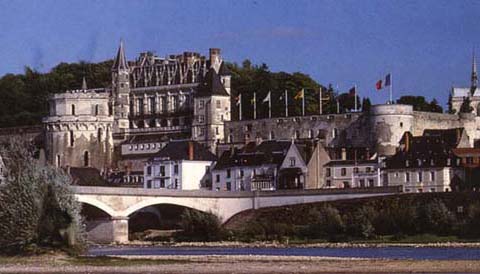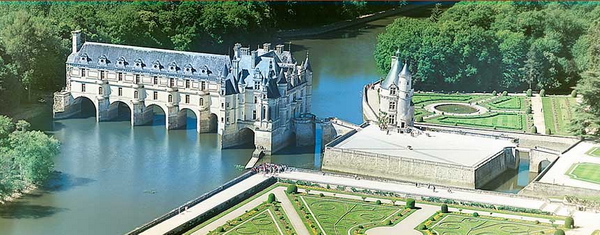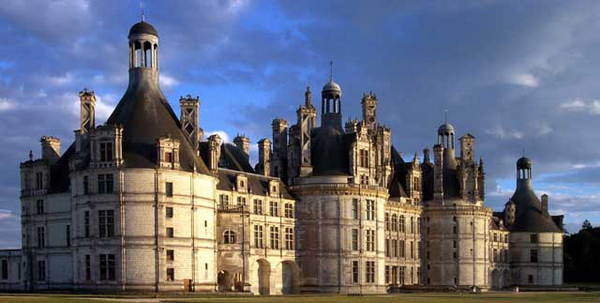Chateau in Val de Loire
Chateau Royal d'Amboise

Built in the 15th and 16th centuries, this truly royal castle introduced Italian style and taste into the Loire Valley. It is steeped in History and the outstanding collection of Gothic and Renaissance furniture make it a wonderfully convivial illustration of life in days gone by.
After touring the royal apartments, take a stroll in the beautiful gardens filled with Mediterranean trees and enjoy the panoramic views. In St. Hubert's Chapel is the grave of Leonardo da Vinci which has recently been the subject of elegant restoration.
The castle is now a reminder of times past and royal prestige.
Chateau de Chenonceau

Set deep in the heart of Touraine, the Chateau de Chenonceau seems to float, motionless, on the peaceful waters of the River Cher, suffused in the gentle light of the Loire Valley. Built between 1513 and 1521 for Thomas Bohier, Chenonceau is a supreme example of Renaissance architecture. It has come down to us today through four hundred years during which the history of this castle has often been closely linked with the history of France itself. Yet , Chenonceau, set on its anchors of stone, withstands the challenges of time.
A waxworks museum ("The Ladies' Gallery") and two restaurants give visitors a chance to combine the pleasures of culture with the delights of the table.
Chambord

The Chateau of Chambord in one of the loveliest Renaissance buildings in the Valley of the Loire. Chambord, chateau, park, and village in the department of Loire-et-Cher in central France. The chateau of Chambord was a retreat for French kings, especially Louis XIV It was under his auspices that French dramatist Moliere's Monsieur de Pourceaugnac and Le bourgeois Gentilhomme were first produced there.
Building of the chateau was begun by Francis I in 1519, and was completed in 1547. Florentine artist Leonardo da Vinci paid a short visit to the building during its construction and added a few embellishments to it. The structure, containing 440 rooms, 365 fireplace, 13 great staircases, and stables to accommodate 1200 horses, stands in a park surrounded by a wall of 22 miles in circumference. 1800 men worked on the chateau.
The archives offers us no information as to the name of the architect but an analysis of the structure reveals a profound influence of Leonardo's thought and a extremely close tie to some of the projects by Domenico da Cortona, and Italian architect.
Te staircase is related to a project by Leonardo which consisted of four distinct superimposed flights of stairs, in order words, just as many stairs as quarters and arms of the cross of the castle. It is therefore likely that Leonardo da Vinci staircase, which may have been conceived for Chambord, was then simplified when it was built by the master masons of the building yard.
After Francis I death in 1574 the castle was practically unused for about fifty years.
After having passed through other hands, the chateau risked being demolished after the Revolution and in 1793 the furnishings were dispersed. In 1947 the State began restorations which were continued for 30 years.